Today, in our lab, we are going to abuse the Sony Ericsson Cedar, a candy bar low end cell phone with standard functions. This is not a handset to speak about much. We assume that the gadget may have problems in bend and squeeze tests because the back cover takes up the entirety of the back of the phone and is heavily raised up.
The package box is compact but pretty barren (Pic. 1). In the box, as well as the phone itself, there is only a battery charger and some papers (Pic. 2). The phone was kept in the envelope-package made from textiles and labeled “GreenHeart”. Perhaps, this package is more eco-friendly than a cellophane one.
The matted black front panel and the keys are entirely made of plastic. The matted red back cover shines in the bright lights as if it is glossy (we’ll find the reason further).
Let’s start our tests.
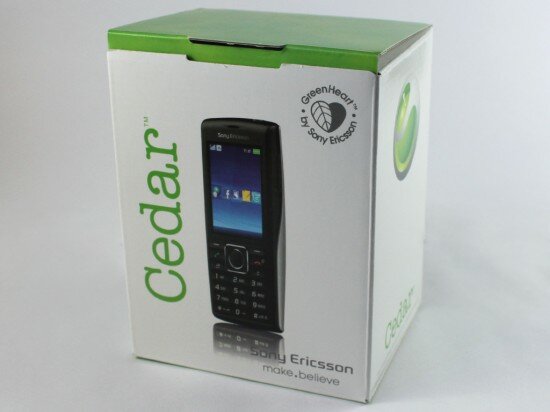
Рic. 1. Package box
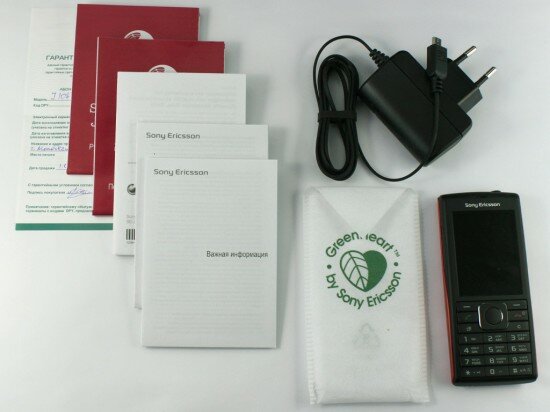
Рic. 2. Accessories
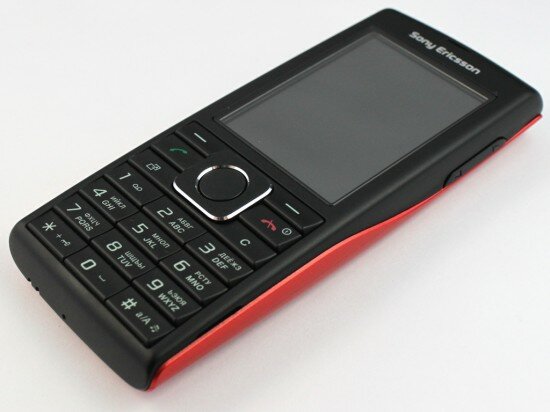
Рic. 3. The Sony Ericsson Cedar (the front panel)
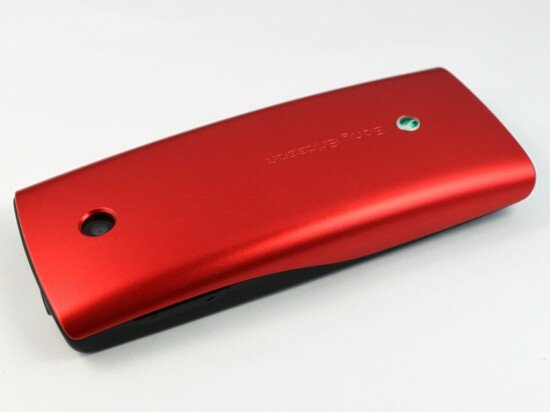
Рic. 4. The Sony Ericsson Cedar (the back panel)
1. Sony Ericsson Cedar stress tests. Stage 1 — Light shocks
1.1. Drop tests
Drop test is usually divided into two parts: drops on the carpet (video 1) from 1 m (3.28 ft) with each face, edge, and corner, and right the same way on the ceramic tile (video 2) from 30 cm (11.8 inches).
The Sony Ericsson sustained no damage.
Video 1. Drops on the carpet from 1 m (3.28 ft)
Video 2. Drops on the tile from 30 cm (11.8 inches)
The grade for the drops on the carpet is 30 (with 30 being the highest possible grade)
The grade for the drops on the tile is 30 (with 30 being the highest possible grade)
1.2 Squeeze test
The squeeze test promises to be interesting because the back of the phone is heavily raised up. The handset is far from being flat. This shape won’t allow the pressure to be regularly distributed all over the casing.
So we placed the phone on a table and applied a 3 kg (6.6 lbs) pressure from a wooden bar above the device (Pic. 5).
The Cedar didn’t show any damage. But let’s wait for the results of the tougher squeeze tests.

Pic. 5. The phone under the 3 kg (6.6 lbs) wooden bar
The grade is 24 (with 24 being the highest possible grade)
1.3 Bend test
Sometimes people may accidentally sit on their cell phones. In such moments they may not only squeeze but also bend them.
In the bend test, we put the Cedar onto the two planks so that each edge of the phone lies on a single plank. Then we hitched a string with 1 kg load (2.2 lbs) on top of the device.
The phone showed no bend.
The grade is 24 (with 24 being the highest possible grade)
1.4 Durability test
It’s very difficult to perform durability tests and get precise results because some people abuse their handsets as much as they can and some users properly take care of their devices. To change the appearance of the gadget for some minutes as if it has been used and abused for months is not an easy thing. But we’ll try to do it.
Actually, we placed the Cedar inside a drum together with keys, pennies, and plastic balls to simulate what might be happening in a man’s pants pockets while carrying the phone. The drum was rotated for 5 minutes at the speed of 500 rpm.
When we took the phone out of the drum and eliminated the dust from it, we were really surprised at the result. The handset showed very little damage. We expected to see paint peeling from the back cover. But instead, we saw only some tiny scratches on the edges of the back cover (Pic. 6). The corners are the most vulnerable part of the phone to damage. There were some small dents on the corners but they were almost invisible due to the matted black casing (Pic. 7). The aluminum navigation key also sustained a few tiny dents (Pic. ![]() and that’s all.
and that’s all.
Video 3. Drum rotation
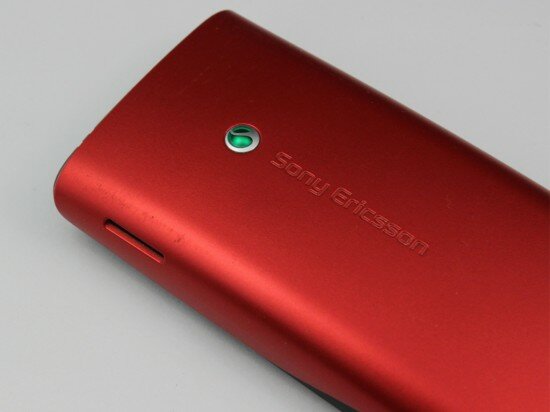
Pic. 6. Scratches on the back cover
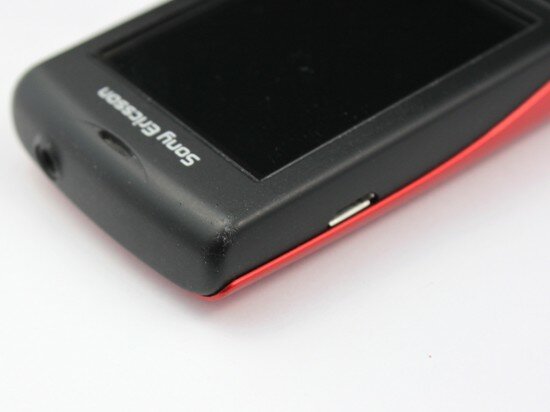
Pic. 7. Peeling paint
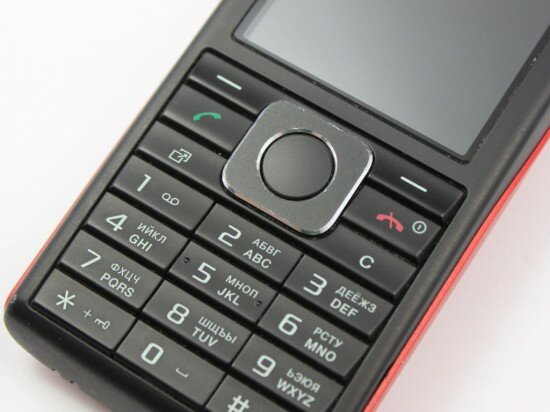
Pic. 8. Here’s how the keyboard looks after the test
The grade is 15 (with 15 being the highest possible grade)
1.5 Scratch test
There is another way to test the phone’s durability. This is to scratch the screen and the back cover. Our machine that had been devised especially for this test applied 100 g (0.22 lbs) pressure from the nail above the phone’s screen. Next, we moved the phone as if taking it out from under the nail allowing the nail to scratch the screen (video 4). We scratched the back cover right the same way. Neither the screen nor the back cover showed any scratch.
Video 4. Back panel scratching
The screen gets 15 points (with 15 being the highest possible grade)
The back panel gets 15 points (with 15 being the highest possible grade)
1.6 High temperature
In this test, we simulated the situation of leaving a cell phone in the sun or near open fire for some time.
Actually, we placed the Sony Ericsson Cedar in a metallic container 5 cm from the electric bulb (40 Wt) that heated the phone for 3 min. (video 5).
We didn’t expect to witness any damage and we were right: the phone stayed fine. The temperature of the handset rose to 77 °С (170.6 °F) that is too little to cause any harm.
Video 5. Heat test
The grade is 12 (with 12 being the highest possible grade)
1.7 Dust test
Sometimes your mobile phone can malfunction because of dust and dirt. Loudspeakers and keyboard are the most vulnerable components of any phone.
In order to check the Cedar’s dust resistance, we took an enclosed tray containing dust and threw the handset inside it. Then we made it vibrate viciously for 2 min.
Here’s how the gadget looked like after the test (Pic. 9). A few grains of dust penetrated under the battery cover (Pic. 10). The exposed USB port was very dirty (Pic. 11). We advise you to check and clean the connectors of your Sony Ericsson Cedar sometimes because if they are blocked with dirt you may break them trying to plug in the battery charger or the data cable. The keyboard started to squeak. Soon it worked fine again. The speakers also performed pretty fine.

Pic. 9. Here’s how the handset looked like after the test

Pic. 10. Dust under the battery cover
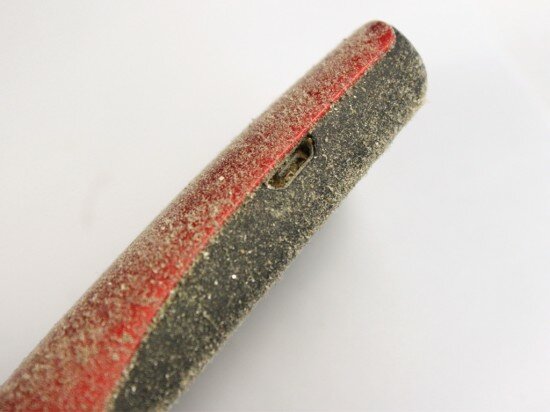
Pic. 11. Here’ how the connectors looked like after the test
The grade is 12 (with 12 being the highest possible grade)
1.8 Signal strength test
Signal strength test is not similar to the torture tests that you have already read about. The phone won’t be abused and its appearance and functionality will stay the same as before the experiment. However, this test is very efficient and the results are always unpredictable.
In order to check the reception and call quality of the Sony Ericsson Cedar, we placed it inside a box (video 6). Then we foiled the box (the foil served as a shield) and made a 45 x 50 mm (1.77x 1.9 inches) hole in it. Next, we made some calls and the phone received all of them although the signal reception fell by 1 point from time to time.
Video 6. Signal strength test
The grade is 15 (with 15 being the highest possible grade)
After the 1st stage of the stress tests, the Sony Ericsson Cedar got 192 (with 192 being the highest possible grade)
2. Sony Ericsson Cedar stress tests. Stage 2 — Tough conditions
2.1 Drop test
We increased the distance of drops at the second stage of the test: from 1.5 m (4.9 ft) on the carpet (video 7) and from 50 cm (1.64 ft) on the tile (video 8).
The phone showed no damage after the drops on the tile. However, the phone rebooted twice during the drops on the carpet from a small distance (1.5 m).
Video 7. Drops on the carpet from 1.5 m (4.9 ft)
Video 8. Drops on the tile from 50 cm (1.64 ft)
The grade for the drops on the carpet is 30 (with 30 being the highest possible grade)
The grade for the drops on the tile is also 30 (with 30 being the highest possible grade)
2.2 Squeeze test
At the second stage of the squeeze test we applied 10 kg (22 lbs) pressure from the wooden bar above the phone.
The gadget stayed absolutely safe.
The grade is 24 (with 24 being the highest possible grade)
2.3 Bend test
This time, we increased the load by 5 times compared to the previous test.
The phone showed a very slight bend (Pic. 12).
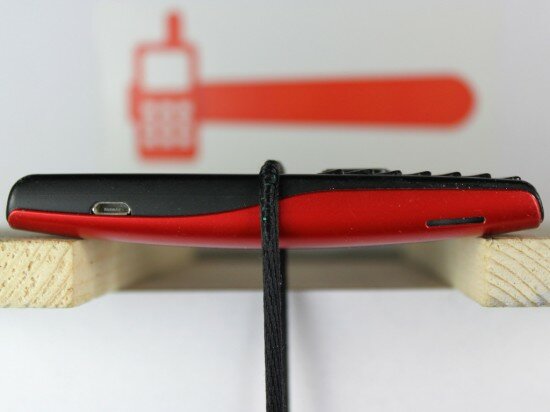
Рiс. 12. Bend inflicted by the 5 kg (11 lbs) weight
The grade is 24 (with 24 being the highest possible grade)
2.4 Durability test
We increased the rotation period to 10 min.
The handset showed more damage, compared to the previous durability test. The paint on the edges of the back cover peeled off completely (Pic. 13). We found more dents on the casing and on the navigation key (Pic. 14).
We should say that the screen of the Sony Ericsson Cedar is quite durable because it sustained very few scuffs and most of them were almost invisible (Pic. 15).

Pic. 13. Peeling paint
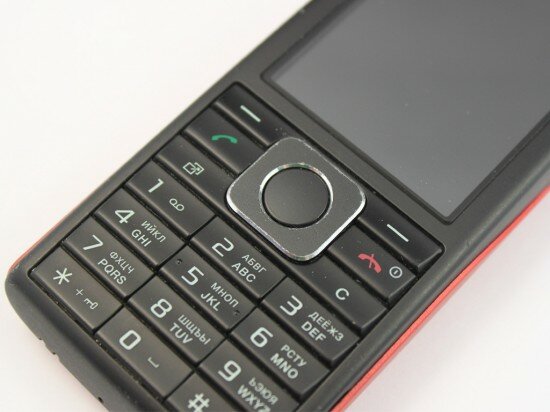
Pic. 14. Here’s how the keyboard looked like after this test
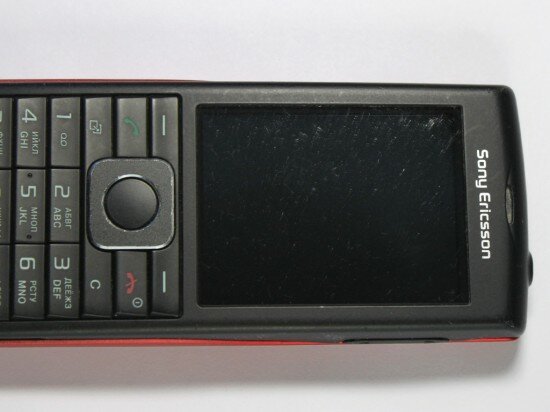
Pic. 15. Scuffs on the screen
The grade is 10 (with 15 being the highest possible grade)
2.5 Scratch test
At the 2nd stage of the scratch test, we increased the applied pressure above the screen and the back cover to 300 g (0.66 lbs).
The screen showed a minor scratch that was invisible in the bright lights (video 9). The back cover sustained a large scratch but not very deep though (video 10).
Video 9. Screen scratching (the force of scratches is 300 g (0.66 lbs))
Video 10. Back cover scratching (the force of scratches is 300 g (0.66 lbs))
The screen gets 15 points (with 15 being the highest possible grade)
The back cover gets 10 points (with 15 being the highest possible grade)
2.6 Freeze test
It goes without saying that you bought your cell phone not for using it at home. You want to use it wherever you are. Therefore, mobile phones should be ready to withstand different adverse conditions, for example, cold weather. You should know that in extremely cold temperature the capacity of cell batteries goes down faster compared to moderate temperatures. The keyboard may also malfunction. However, not all mobile phones show poor performance in the cold.
To what group does the Sony Ericsson Cedar belong? The freeze test will help us to find the answer. We placed the gadget in a freezer and left it there in speaking mode for 2 hours.
As a result, the phone didn’t survive the cold – it switched itself off (video 11). So we have to lower the grade for the handset from 18 to 6. When we switched on the phone we saw that the battery was empty. The rubberised keys became stiff. The display malfunctioned.
It took half an hour for the Cedar to get warm. Then the handset started to perform fine again. However, the information about the capacity of the battery was refreshed only after we rebooted the phone (usually, this information is refreshed immediately). All in all. the battery capacity went down a little bit less than by half.
We can infer that the Sony Ericsson Cedar didn’t pass the freeze test. Moreover, the feeling of the frozen aluminum navigation key on your cheek is very irritating, believe us. If you live in a very cold area you’d better not to take this phone out of your pocket.
Video 11. Freeze test
The grade is 6 (with 18 being the highest possible grade)
2.7 Heat test
In this stage of the test, the electric bulb heated the phone for 5 min.
As a result, the temperature of the gadget rose to 107 °С (224.6 °F) but the plastic casing didn’t melt and the display color rendering stayed fine. However, the navigation key got too hot to touch.
The grade is 12 (with 12 being the highest possible grade)
2.8 Immersion in water
Before starting the mass production of any electronic gadget, the majority of manufacturers tests their products under extreme conditions. Getting caught in the rain with a cell phone is among such tests. But we decided to provide a much tougher challenge for the Sony Ericsson Cedar. Actually, we dunked the phone under water for 1 second (video 12).
As a result, the loudspeakers and the polyphonic speakers got wet and started to sound worse than before the test (Pic. 16). Despite the speakers, the phone performed pretty fine. There is a very interesting fact: the exposed USB port stayed dry – strange but true.
We dried the phone for an hour and made an attempt to switch it off. However, the handset refused to do it. We decided to dry it again and in 30 min. the gadget started working. We can only infer that the Sony Ericsson Cedar is not a water resistant cell phone.
Video 12. Immersion in water for 1 second
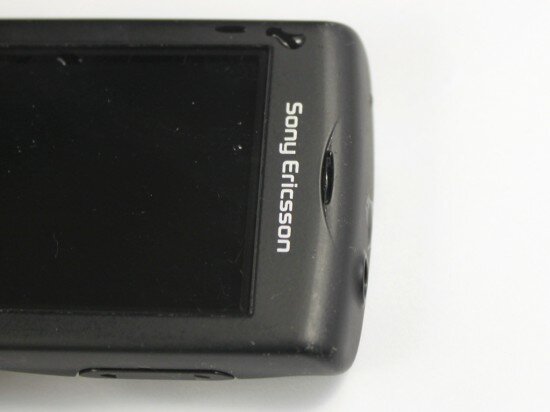
Pic. 16. Evidence of water in the speaker
The grade is 30 (with 30 being the highest possible grade)
2.9 Dust test
At this stage of the dust test, the vibration lasted for 5 min.
We saw a lot of dust in the battery slot (Pic. 17). But the USB port wasn’t so dirty as in the previous test (Pic. 18). The bottom row of the keyboard became stiff because many grains of dust and sand penetrated it. The other keys worked fine but we heard an unpleasant noise each time when we pressed them. Fortunately, we managed to remedy this problem by slapping the phone and shaking out the dust.

Pic. 17. Dust in the battery slot
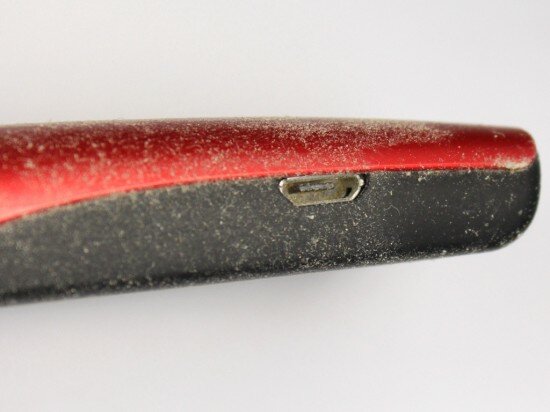
Pic . 18. The USB port
The grade is 12 (with 12 being the highest possible grade)
2.10 Signal strength test
We decreased the size of the hole to 20 x 20 mm (0.787 x 0.787 inches) (video 13). The signal strength was reduced by 1 – 2 bars but the phone received all incoming calls.
Video 13. Signal strength test
The grade is 15 (with 15 being the highest possible grade)
After the 2nd stage of the stress tests, the Sony Ericsson Cedar got 214 (with 240 being the highest possible grade)
3. Sony Ericsson Cedar stress tests. Stage 3 — The toughest conditions
3.1 Drop test
At the last stage of this test, we dropped the phone on the carpet (video 14) from 2 m (6.56 ft) and on the tile (video 15) from 1 m (3.28 ft).
The Cedar sustained no damage and didn’t rebooted. The gadget successfully passed the drops on the carpet and on the tile.
Video 14. Drops on the carpet from 2 m (6.56 ft)
Video 15. Drops on the tile from 1 m (3.28 ft)
The grade for the drops on the carpet is 30 (with 30 being the highest possible grade)
The grade for the drops on the tile is 30 (with 30 being the highest possible grade)
3.2 Squeeze test
We increased the pressure we applied to 20 kg (44 lbs).
The phone showed poor results. The pressure of the wooden bar was so heavy that the image of the back cover was stamped on the battery (Pic. 19). However, the Cedar stayed functional.
Perhaps, the battery capacity went down a little bit and that’s all.
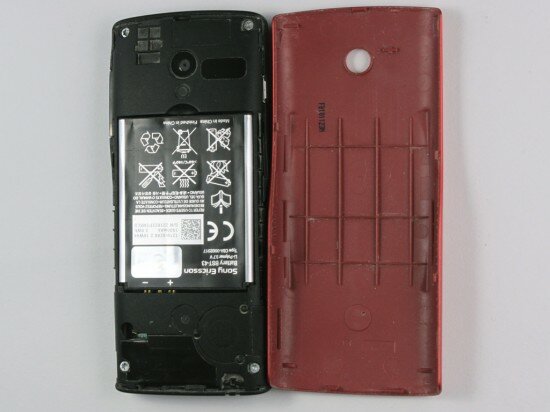
Pic. 19. The image of the back cover stamped on the battery
The grade is 16 (with 24 being the highest possible grade)
3.3 Bend test
We applied 10 kg (22 lbs) weight in our attempt to bend the Sony Ericsson Cedar. The phone showed only a slight bend no matter how we placed it (either on the back or on the face) (Pic. 20, 21). We can say that this is a bend resistant cell phone.
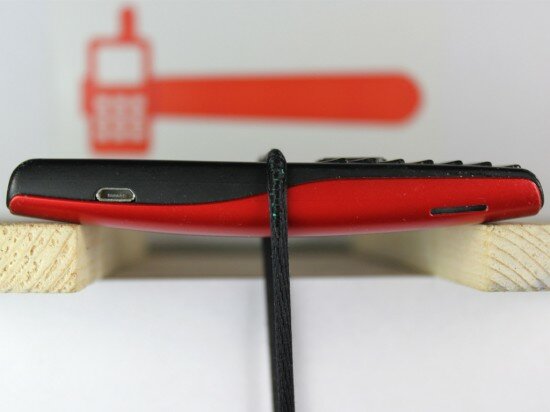
Pic. 20. The phone placed on its back shows a slight bend under the 10 kg (22 lbs) weight
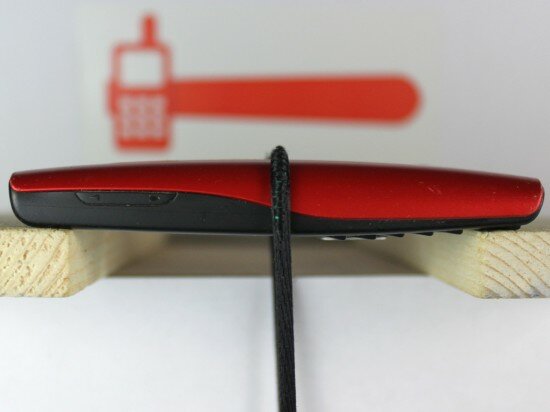
Pic. 21. The phone placed on its face shows a slight bend under the 10 kg (22 lbs) weight
The grade is 24 (with 24 being the highest possible grade)
3.4 Durability test
The drum was rotated for 20 minutes which is the longest period for this test.
We needn’t comment the results of the experiment because everything is clear from the pictures (Pic. 22 – 25). Generally speaking, all the components of the phone sustained a lot of damage.
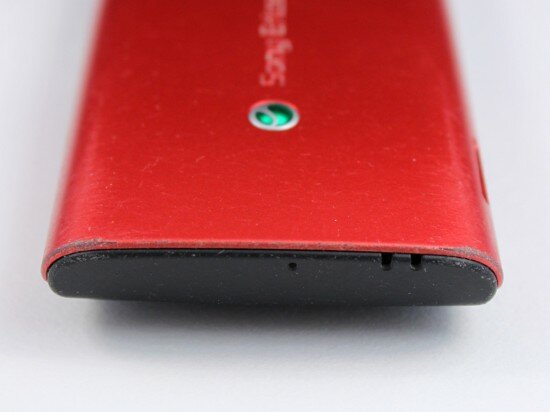
Pic. 22. Scratches on the paint
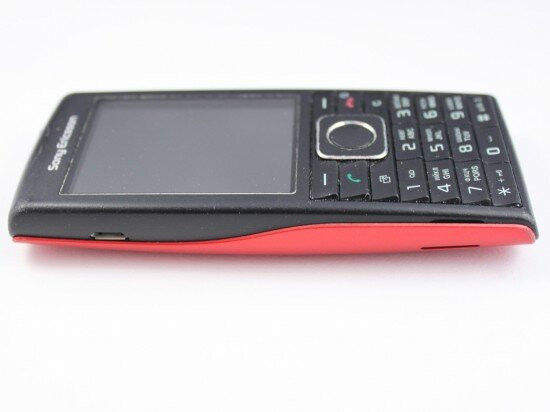
Pic. 23. Sony Ericsson Cedar (side-face)
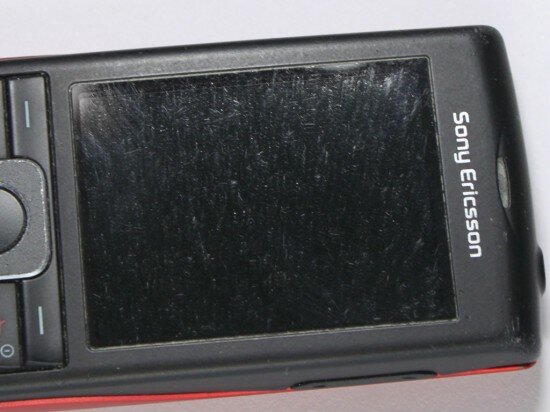
Pic. 24. Scuffs on the screen
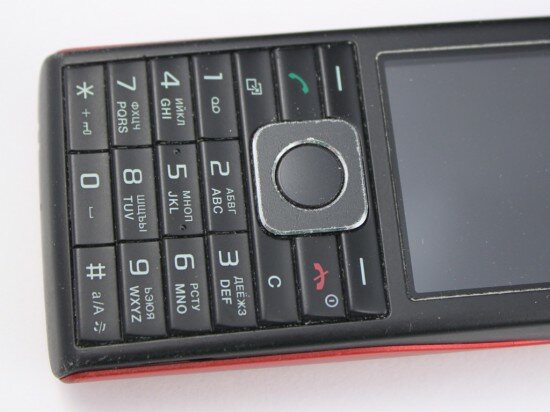
Pic . 25. The keyboard
The grade is 10 (with 15 being the highest possible grade)
3.5 Scratch test
We applied 600 g (1.322 lbs) pressure from the nail above the phone.
The screen showed a deep scratch (Pic. 26, video 16). When we scratched the back cover, we saw many pieces of paint and steel flowing from under the nail (video 17). So we got to know that the phone’s body was covered by a thin layer of steel and painted red. That’s why we said in the beginning of this review that the matt back cover was shining like a mirror. The back cover showed a deep scratch (Pic. 27).
Video 16. Screen scratching
Video 17. Back panel scratching
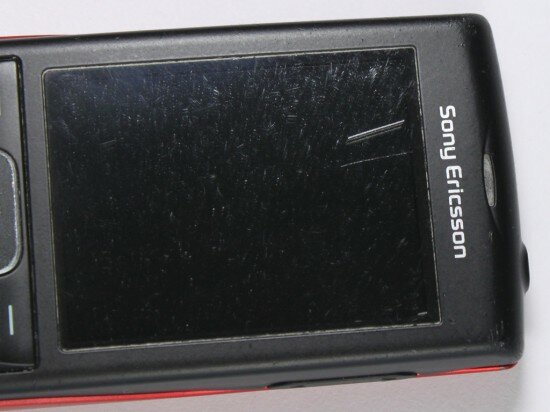
Pic. 26. Scratches on the screen
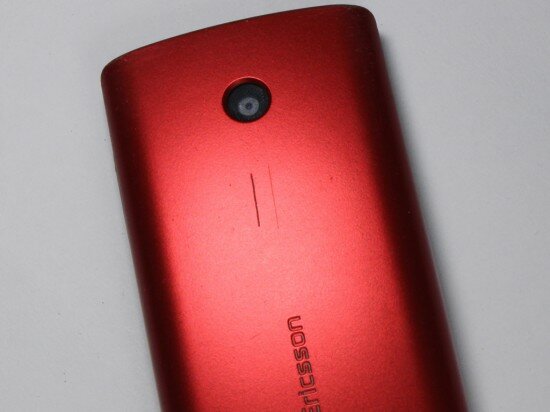
Pic. 27. Scratches on the back cover
10 points for the screen (with 15 being the highest possible grade) for the screen
10 points for the back cover (with 15 being the highest possible grade) for the back cover
3.6 Heat test
We heated the phone for 10 min. (video 18).
The temperature of the gadget rose to 112 °С (233.6 °F). The phone sustained no damage at all. Even the display color rendering stayed fine. However, the aluminum navigation key was too hot to touch within a minute after the test.
Video 18. Heat test
The grade is 12 (with 12 being the highest possible grade)
3.7 Immersion in water
In this test, we dunked the Cedar under water for 20 sec. (video 19).
During this period, water penetrated the connectors and under the battery. However, we dried the phone for an hour and switched it on with no problem.
Video 19. Immersion in water for 20 sec.
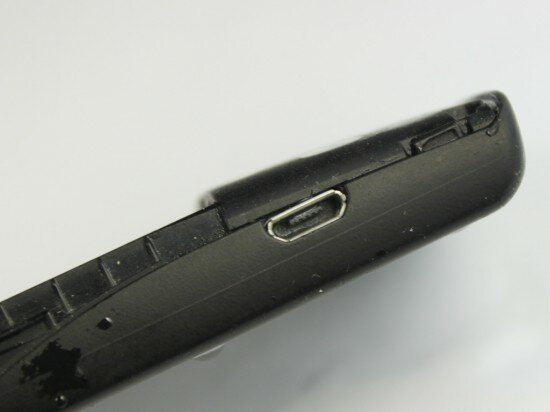
Pic. 28. The USB port got wet
The grade is 30 (with 30 being the highest possible grade)
3.8 Immersion in beer
Manufacturers of electronic gadgets pour water over products trying to test them before starting mass poduction. But water is not the only liquid you may drop your gadget in. Actually, nobody performs beer resistance tests, except us. That makes the following test unique.
We dunked the Cedar under beer for 10 sec. (video 20).
The results were as fine as in the water test. After the experiment we washed and dried the phone. Then we switched it on and checked everything: the speakers sounded fine.
Video 20. Immersion in beer for 10 sec.
The grade is 9 (with 9 being the highest possible grade)
3.9 Dust test
At the last stage of the dust test the tray was vibrated for 10 min.
As a result, we saw much more dust in the battery slot than in the previous tests. All the dirt penetrated through the top part of the battery cover (Pic. 29). There were also a few grains of dust under the screen (Pic. 30). The keyboard started to malfunction. All the keys became very stiff. Despite the absence of any audible feedback provided when we pressed the keys, all of them worked. Fortinately, we managed to remedy all the problems by slapping the phone and shaking out the dust.
However, we couldn’t get rid of all the dirt. There was a lot of dust in the seam between the sceen and the casing. We also saw dust in the loudspeaker.
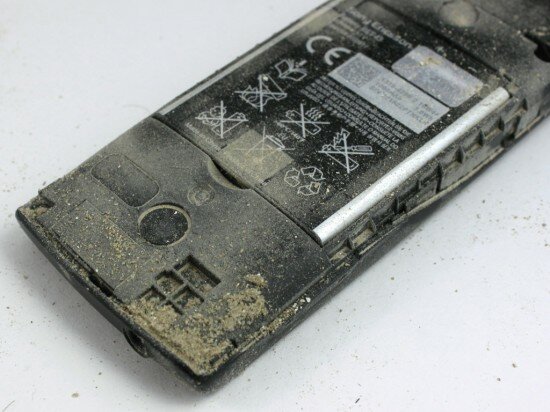
Pic. 29. Dust in the battery slot
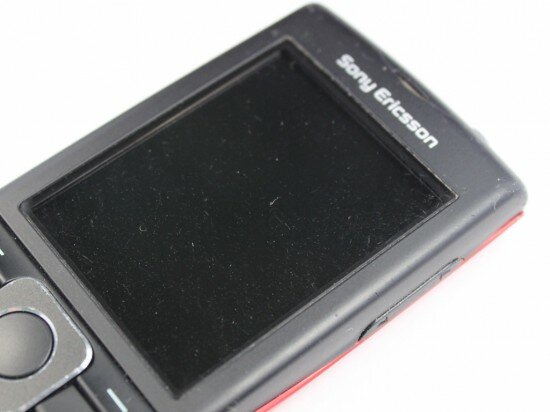
Pic. 30. Dust under the screen
The grade is 8 (with 12 being the highest possible grade)
3.10 The keyboard
The keyboard is made of high quality plastic. After the tests it sustained no visible scratches. However, the aluminum navigation key showed some dents and scuffs.
In cold weather the keyboard became very stiff and the keys worked only when we pressed them heavily.
At first sight, the seams between the keys are too small for dust to seep through. However, dust penetrated under the keyboard through them.
The grade is 20 (with 30 being the highest possible grade)
3.11 Signal strength test
We reduced the signal from the cell towers by decreasing the size of the hole in the shielded box to 15 x 15 mm (0.59 x 0.59 inches).
The results of this test were the same as in the previous one. The handset received all incoming calls. The signal strength fell only by 1 – 2 bars.
The grade is 15 (with 15 being the highest possible grade)
3.12 Short circuits and overcharge
The last test for the Sony Ericsson Cedar will be in electricity.
We started with the battery charger. Actually, we shorted it by connecting the – and + terminals together with the help of the forceps for 1 sec. (video 21).
The battery charger stayed functional.
Video 21. Short circuit of the battery charger
We also shorted the battery (video 22).
When we connected the – and + terminals of the battery together, we saw a spark. But the battery showed no damage and didn’t even deplete.
Video 22. Short circuit of the battery
Next, we checked the reaction of the Cedar to the increase in charging voltage. We plugged the battery charger in the PSU and raised the voltage from 5 to 8 V (video 23).
When the voltage was about 8 V the phone stopped charging and restored it when we decreased the voltage to the starting point (5 V). Then we reduced the charging voltage – the phone also showed fine results.
Video 23. Increase/decrease in charging voltage
Finally, we examined the phone’s energy consumption. We took out the battery and plugged the PSU in the phone (video 24).
At first, we increased energy supply and when we reached 7 V the phone started to consume more current. At 7 V the gadget consumed 4 times more power than in normal conditions.
When we reduced the energy supply back to the starting point the power consumption was still high. It meant that the power circuit was damaged. We tried to reboot the phone but it didn’t switch on. However, the indicator in the
PSU showed that the Cedar still consumed 40 mА. Do we need to say that the phone shouldn’t consume any power if it is switched off?
The Sony Ericsson Cedar passed the majority of the tests but didn’t survive the last one.
Video 24. Increase in energy supply
The battery charger (short circuit) gets 15 (with 15 being the highest possible grade)
The battery (short circuit) gets 15 (with 15 being the highest possible grade)
The grade for the increase/decrease in charging voltage is 15 (with 15 being the highest possible grade)
The grade for the increase/decrease in energy supply is 0 (with 15 being the highest possible grade)
3.13 Disassembling
When we disassemble Sony Ericsson cell phones we usually have to use the two screwdrivers (the cross-point screwdriver and hexagon screwdriver). The Cedar wasn’t an exception. The design of the phone is simple but we didn’t expect it to be refined (Pic. 31).
The processor and the microchip responsible for the memory are soldered together. This design of the circuit board is not new and more and more low end cell phones are produced with such boards. This makes a positive impact on their functionality.
All the elements are attached to one side of the circuit board (Pic. 32). The majority of them are protected by the removable shields and none of them are soldered to the board. The speakers and the antenna have a contact joint while the display is attached through the input jack that is soldered to the circuit board.

Pic. 31. The Sony Ericsson Cedar disassembled
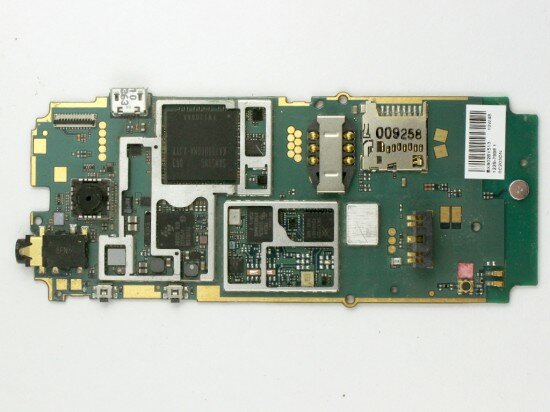
Pic. 32. The Sony Ericsson Cedar’s circuit board
The grade is 30 (with 30 being the highest possible grade)
After the 3rd stage of the stress tests, the Cedar got 299 points (with 351 being the highest possible grade)
Final words
Sony Ericsson rarely pleases its fans with new models of cell phones. We tested only the two Sony Ericsson handsets inclueing the Cedar: The Sony Ericsson Vivaz was the previous one.
As for the Cedar, the phone perfectly passed the first stage of the tests and gained maximum points.
At the second stage, we found some disadvantages. The handset couldn’t withstand cold weather and switched itself off. Lots of dust penetrated under the keyboard and made the keys stiff.
The Cedar malfunctioned after the immersions in water and in beer but soon all the functions were restored and we didn’t lower the grade for the phone. Finally, the increase in energy supply broke the phone.
During the drop tests the phone rebooted but we also didn’t lower the grade for the handset. Taking into consideration the results of the Vivaz’s drops (they were much worse the results of the Cedar’s drops) we can infer that Sony Ericsson phones are not reliable at all. We hope that this is a mere coincidence.
The phone survived the heat tests. But the users of the Cedar may face serious problems because the aluminum navigation key gets too hot after some minutes of lying in the sun. You may burn your thumb or ear if you try to speak on the phone in such situation.
Finally, a few words about the Sony Ericsson Cedar’s performance. The first thing that we like is the rich interface. The phone provides a variety of animations and effects. This makes the menu interface complicated and you’ll probably need some time to get used to it.
Here’s how the phone looks like after all the tests (Pic. 33, 34, video 25).
Video 25. Here’s how the phone looks like after all the tests
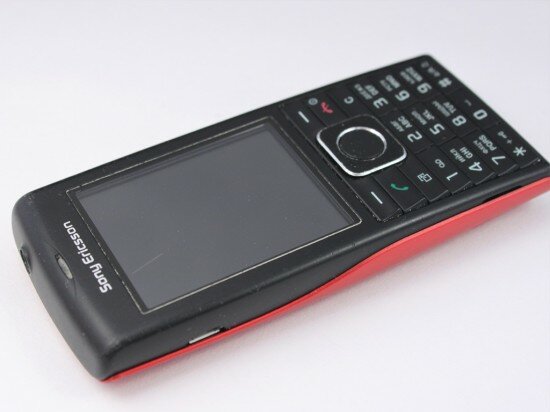
Рiс. 33. Here
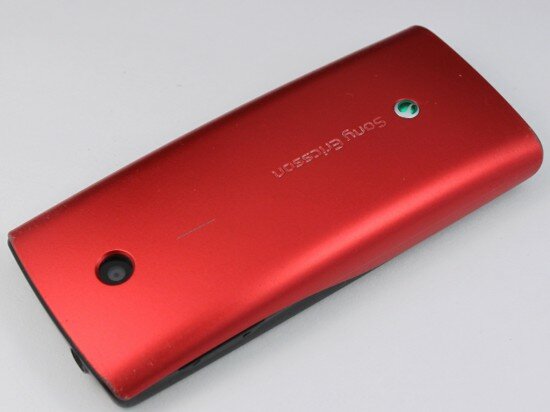
Рiс. 34. Here

 Russian version
Russian version